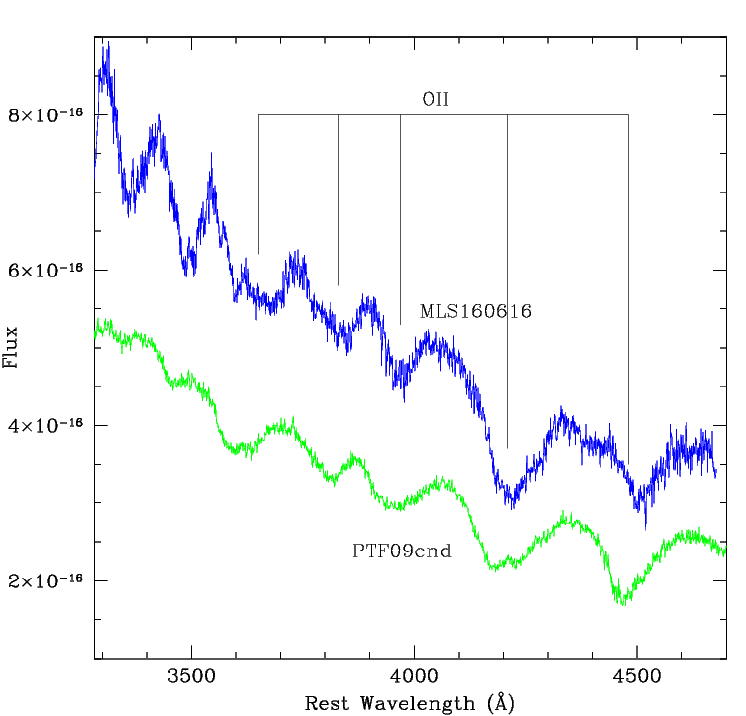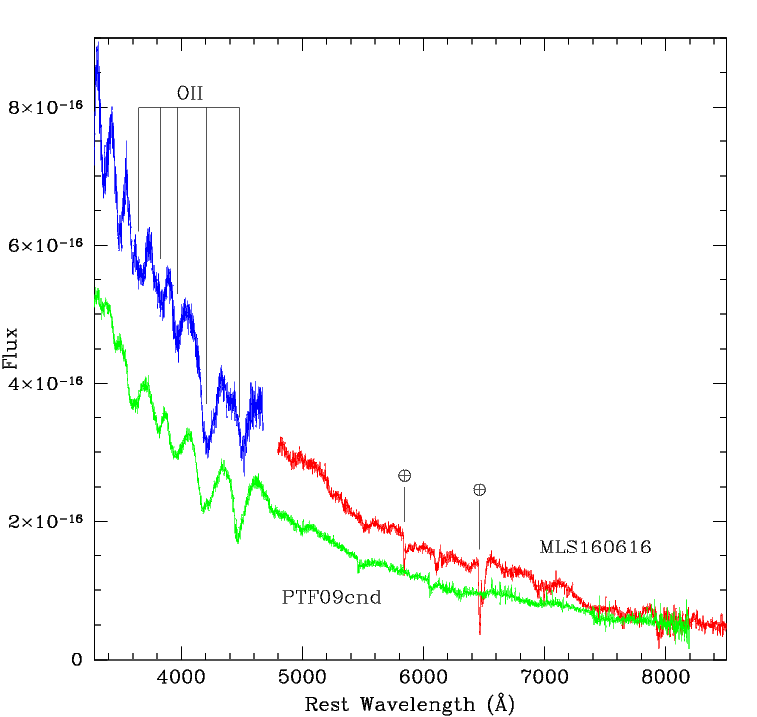

Palomar 5m spectra from 2016 July 3rd UT of MLS160616:160420+392813 compared to the Keck spectrum of known SLSNe PTF09cnd. Left: blue DBSP spectrum showing the distinctive hydrogen-poor SLSNe. Right: The combined full DBSP spectrum with separate the blue and red beams coloured separately.
As noted in Drake et al. 2016 the best spectroscopic match is to the pre-maximum spectra of known SLSN LSQ14bdq. However, due to the relatively low S/N of the public LSQ14bdq spectra, here we present a comparison with the high S/N Keck spectrum of SLSN PTF09cnd.
The CSS lightcurve shows that the event occured around June 3rd and took at least a month to reach maximum. Additional observations by Gregor Krannich suggest that the object remained of similar brightness on July 16th.
Comparison of the spectroscopic features suggest the supernova has a redshift of z=0.18. Based on the CSS lightcurve the peak was V~17.4. This suggests that the supernova had Mv=-22.2 at maximum (without correction for extinction), consistent with the SLSNe classification.